I am stuck at drawing the approximate Bode plot for the complex pole transfer function as below.
Please see the question and problem in the picture.
How do you determine the approximate frequency where the magnitude starts decreasing -40dB/dec as the figure?
PS:
Sorry I made some silly mistake. Actually I want to say that these poles are in the LHS of the complex plane but I got it backward. Please assume that they are in the LHP now and the system is stable.


